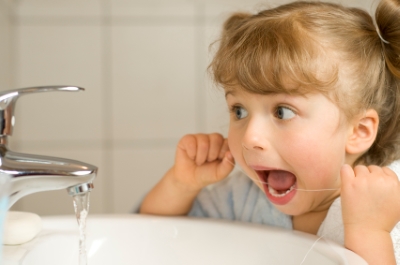Children's Dental Care at Pediatric Dentistry Kahala

There is nothing more important to Dr. Allen K. Hirai and his staff at Pediatric Dentistry Kahala than your child’s complete oral health. That’s why we offer dental patients in Honolulu and the surrounding communities of Kahala, Manoa and Hawaii Kai areas a complete array of preventative and pediatric dental care services. As a leading pediatric dentistry, we have a responsibility for keeping our patients and parents informed about the techniques and tools we use. One of the techniques we use are dental sealants.
What Are Dental Sealants?
Dental sealants are used to protect young teeth from tooth decay and could reduce the need for further treatment. They are invisible plastic resin coatings that protect teeth from bacteria that could lead to tooth decay. Dental sealants are used on both newly-erupted permanent teeth and baby teeth.
Where & Why Are Dental Sealants Used?
The chewing surfaces of your child’s back teeth are the most likely place for a cavity to develop. This, in part, is due to the uneven surfaces on the back teeth, grooves called “pits and fissures.” These grooves can trap food particles and bacteria even after brushing. The confines of these dark, moist crevices is the perfect place for tooth decay.
We recommend using dental sealants to cover these tiny crevices, as they help smooth out the chewing surfaces of the back teeth and make them resistant to decay. As a result, your child will have a much lower chance of developing painful cavities, which may require more expensive dental treatment later on. Dental sealants may also be used to protect the initial indentation of a cavity on a tooth’s surface, preventing it from further damage and eliminating the need for a filling.
Why New Teeth Get Cavities
When your child first gets his or her permanent teeth, they are more susceptible to tooth decay. Over time, the hard enamel coating on your child’s teeth gets stronger. Daily consumption of water with fluoride is one strong prevention method, but it’s hard to get fluoride into those pits and fissures on a regular basis. Baby teeth are susceptible to tooth decay for the same reasons.
How Dental Sealants Are Placed
Applying dental sealants at our Honolulu pediatric dentist office is painless and doesn’t require any numbing shots. The tooth enamel doesn’t contain any nerves so it is not like having a cavity filled. Dental sealants are sort of like a mini plastic filling. Here’s what to expect:
- Examination: Before Dr. Hirai places a sealant, he will first examine the specific tooth or teeth for any tooth decay.
- Decay Removal: If any minimal tooth decay is found, it will be gently removed.
- Cleaning: The tooth will be properly cleaned and dried.
- Etching Solution: Dr. Hirai will apply a solution that will slightly roughen or “etch” the surface of the tooth to make the sealing material adhere better.
- Rinse & Dry: The tooth is then rinsed and dried again.
- Sealant Application: Finally, Dr. Hirai paints the sealant on the tooth in liquid form.
- Hardening: A special curing light is used to help harden the sealant. This process usually takes about a minute.
Caring For Newly Sealed Teeth
Dr. Hirai and the staff at Pediatric Dentistry Kahala will walk you through the best practices for caring with your teeth, but sealed teeth require the same diligent dental hygiene routine as unsealed teeth. Your child should continue to brush and floss his or her teeth daily and visit us at our Honolulu, HI pediatric dentist office for regular professional cleanings. This will give Dr. Hirai a chance to check for wear and tear on the sealants, which should last up to ten years.
Protect Your Child’s Teeth Today
Dental sealants are a great, painless form of preventative treatment proven to reduce decay by more than 70%. To learn more about dental sealants, or to book an appointment with Pediatric Dentistry Kahala, contact us today at (808) 737-0076. We look forward to helping the children smile brighter every day.